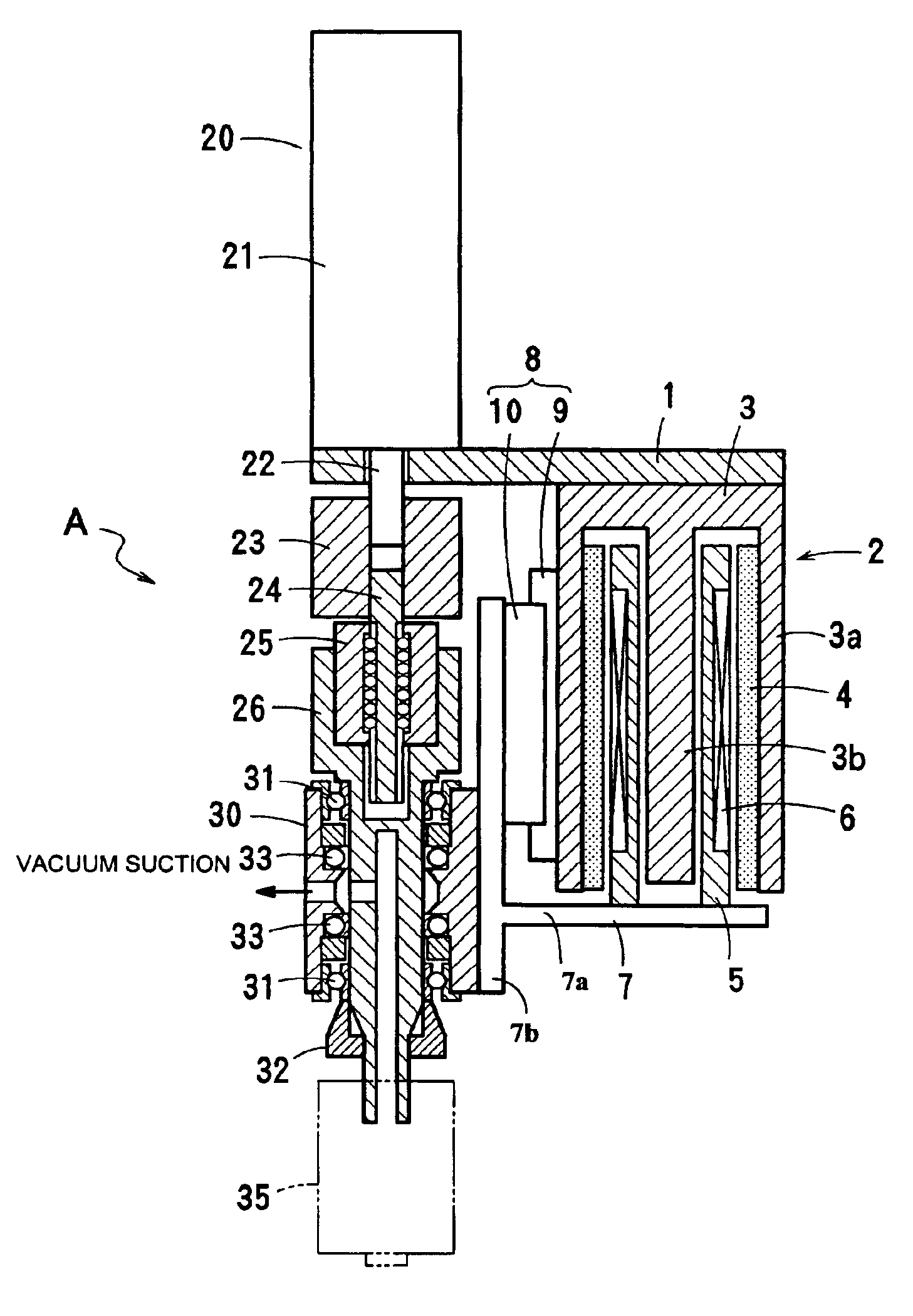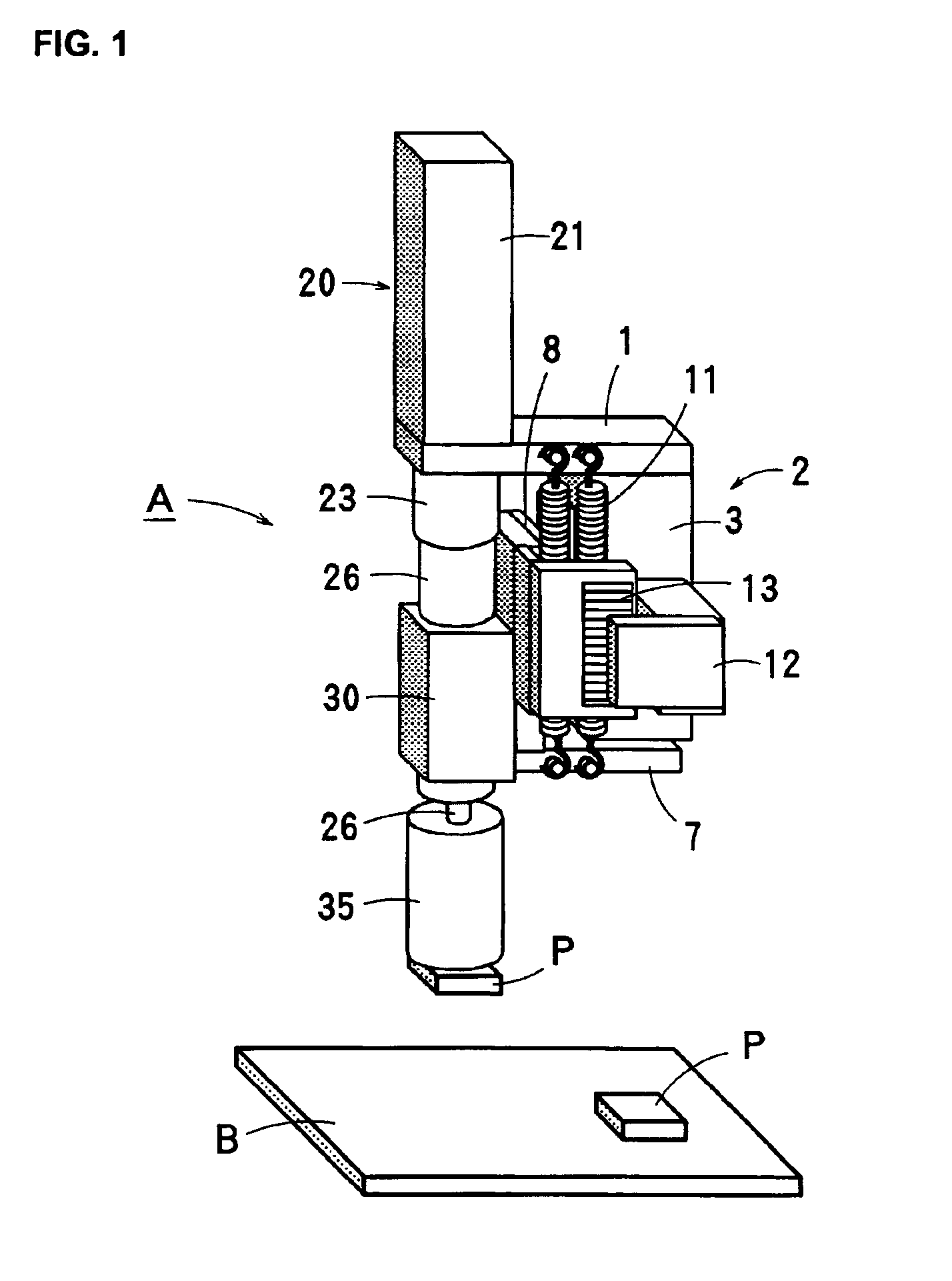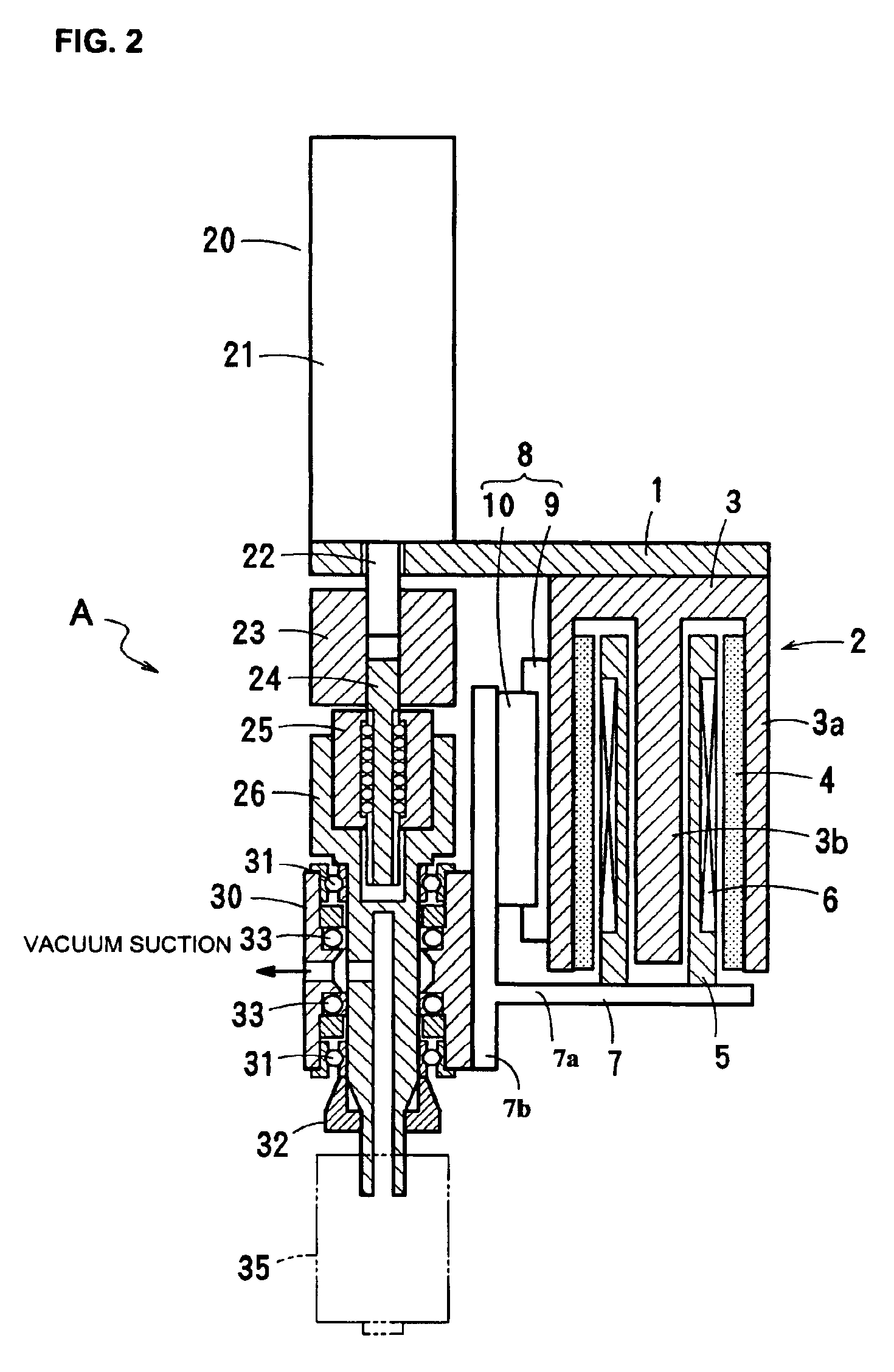Component-placing apparatus
a technology of component placement and component, which is applied in the direction of metal working apparatus, manufacturing tools, transportation and packaging, etc., can solve the problems of large size of rotary motor, large inertia ineffective thrust force generation of voice coil motor, etc., and achieve the effect of small siz
- Summary
- Abstract
- Description
- Claims
- Application Information
AI Technical Summary
Benefits of technology
Problems solved by technology
Method used
Image
Examples
Embodiment Construction
FIGS. 1 to 4 show a component-placing head (i.e., a component-placing apparatus) according to an embodiment of the present invention. Here, an electronic component P and a board B are referred to as a component and a fixing surface, respectively.
A component-placing head A according to the embodiment includes a supporting plate 1 fixed to a head of an X-Y robot or the like, a voice coil motor 2 as an example of a linear actuator having a stator (yoke) 3 fixed on the under surface of the supporting plate 1, and a servomotor 20 as an example of a rotary actuator having a stator 21 fixed on the upper surface of the supporting plate 1.
As shown in FIG. 2, the voice coil motor 2 is fixed on the lower surface of the supporting plate 1 and formed by the yoke 3 having an outer yoke 3a and a center yoke 3b, a magnet 4 fixed on the inner surface of the outer yoke 3a, a bobbin 5 inserted in the yoke 3 so as to be vertically movable, a coil 6 wound around the bobbin 5, and so forth. The coil 6 li...
PUM
| Property | Measurement | Unit |
|---|---|---|
| suction | aaaaa | aaaaa |
| spring force | aaaaa | aaaaa |
| force | aaaaa | aaaaa |
Abstract
Description
Claims
Application Information
 Login to View More
Login to View More - R&D
- Intellectual Property
- Life Sciences
- Materials
- Tech Scout
- Unparalleled Data Quality
- Higher Quality Content
- 60% Fewer Hallucinations
Browse by: Latest US Patents, China's latest patents, Technical Efficacy Thesaurus, Application Domain, Technology Topic, Popular Technical Reports.
© 2025 PatSnap. All rights reserved.Legal|Privacy policy|Modern Slavery Act Transparency Statement|Sitemap|About US| Contact US: help@patsnap.com



